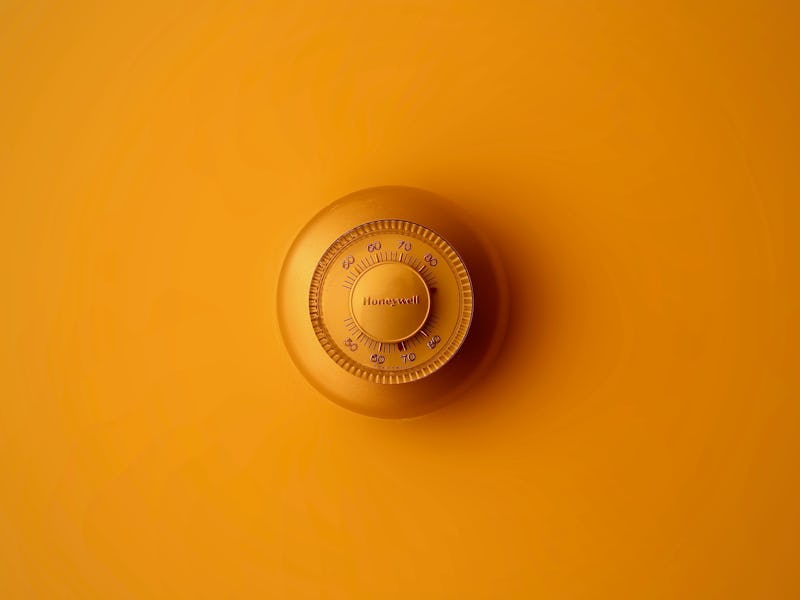The Office Temperature Debate Has Very Different Impacts on Women and Men
Yes, there is such a thing as too cold.

The climbing outdoor temperatures of summer are often matched by a drastic dip in indoor office temperatures. As we dust off air conditioning units all over the country, setting the ideal temperature will prove controversial. Some will thrive, others will freeze, and according to new research, that temperature could significantly impact how well each person performs at work.
In a paper published Wednesday in the journal PLOS One, University of Southern California professor of finance and business economics Tom Chang, Ph.D., presents evidence that office temperature affects men and women differently, leading to differences in performance on math and verbal tests. Women, his experiment showed, tended to perform better in warmer temperatures, while men seemed to perform worse.
Chang’s experiment shows that temperature has a causal effect on how both men and women perform at cognitive tests. The explanation behind his results, he tells Inverse, is pretty simple.
“It’s likely about comfort,” Chang says. “More specifically, if you are too hot or too cold, you are a bit uncomfortable and thus less likely to perform at your best.”
Chang's work points to 70 degrees as an equitable temperature that doesn't impact performance.
In the experiment, Chang and his co-author Agne Kajackaite, Ph.D., of the Berlin Social Science Center, had 543 students at a German university take both verbal and math tests in rooms that ranged from 16 degrees Celsius (about 61 degrees Fahrenheit) to 33 degrees Celsius (about 91 degrees Fahrenheit). The math test showed the most significant differences between sexes. Every one degree Celsius increase in temperature was associated with a 1.76 percent increase in correct answers on the math tests taken by women and a corresponding 0.63 drop in correct answers for men.
The verbal tests also showed important differences by both gender and temperature, though the effects were less pronounced. For every one degree increase in temperature, women’s verbal scores improved by 1.03 percent and men’s dropped by 0.6 percent.
As the room temperature climbed, women (red) tended to perform better on math and verbal exams, whereas men (blue) performed slightly worse.
In the paper, Chang notes that the increases in women’s performance were more powerful than the decreases in men’s performance as temperature climbs, which makes the case that it’s more than a courtesy to crank up the temperature just a bit.
“Given the relative effect sizes, our results suggest that in gender-balanced workplaces, temperatures should be set significantly higher than current standards,” they write.
In light of Chang’s results, it may be tempting to ask what really is an ideal work temperature. His results point to a balmy 70 degrees, which may not work for everyone, he adds. But it’s a start toward creating a work environment where everyone is able to perform their best.
“What I think people should take away from the study,” he says, “is that we should be more cognizant about the potential impact of environmental factors like temperature have on us.”
Abstract:
This paper studies differences in the effect of temperature on cognitive performance by gender in a large controlled lab experiment (N = 543). We study performance in math, verbal and cognitive reflection tasks and find that the effects of temperature vary significantly across men and women. At higher temperatures, women perform better on a math and verbal task while the reverse effect is observed for men. The increase in female performance in response to higher temperature is significantly larger and more precisely estimated than the corresponding decrease in male performance. In contrast to math and verbal tasks, temperature has no impact on a measure of cognitive reflection for either gender. Our findings suggest that gender mixed workplaces may be able to increase productivity by setting the thermostat higher than current standards.